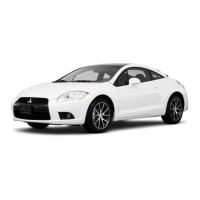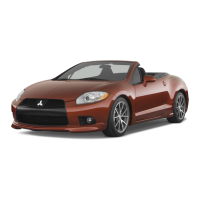POWER TRAIN
-
Automatic Transaxle
here
I
End of the
I
sensor counts
tor
attaches
here
Park/N&tral
g+j
h+spe&-j
1
1
\
position
switch
Input Speed Sensor
The input speed sensor gives information, to the TCM, on
how fast the torque converter turbine is spinning. The sensor
is located on the front side of the transaxle case, close to
the bell housing. Even though the sensor is called the input
speed sensor, the sensor is actually generating a signal from
the torque converter turbine through the input clutch hub. The
torque converter turbine and input clutch hub are splined togeth-
er through the input shaft. The information supplied to the
TCM from the input sensor is compared to the output shaft
signal and the engine speed signal to determine planetary
gearset
operating ratio, torque converter clutch slippage, torque
converter element speed ratio, torque capacity, etc. The rate
of input speed change is calculated and used in controlling
shifts.
Output Speed Sensor
The output speed sensor is located on the same side of the
transaxle case as the input speed sensor, but much closer
to the end of the transaxle. The output speed sensor generates
a signal from the rotation of the rear planetary carrier assembly.
When the output speed sensor signal is received by the TCM,
the signal is compared to the input speed signal to deternmine
gear ratio, detect clutch slippage, etc. It is also compared to
the throttie signal to determine shift points.
The output speed sensor is also used as the input for calculating
vehicle speed to the Powertrain Control Module (PCM). The
F4ACl
transaxle does not have a vehicle speed sensor as
in other applications. The output speed signal is a direct input
to the TCM and is sent across the CCD bus for use by other
control modules.
‘d
Transmission Range and Park Neutral Position Switches
The transmission range switch is mounted to the case in the
valve body area. The input from the switch along with the
park neutral position switch tells the TCM what gear range
was selected by the driver. The TCM uses this input to determine
what gear range and shift pattern to use. The park neutral
position switch operates the starter relay and both the park
;L)
neutral position and transmission range switches operate the
back up lamp relay. The park neutral position switch does
not allow starter engagement in any positions other than Park
“P” or Neutral “N”. Both switches must be closed to operate
the back-up lamps.

